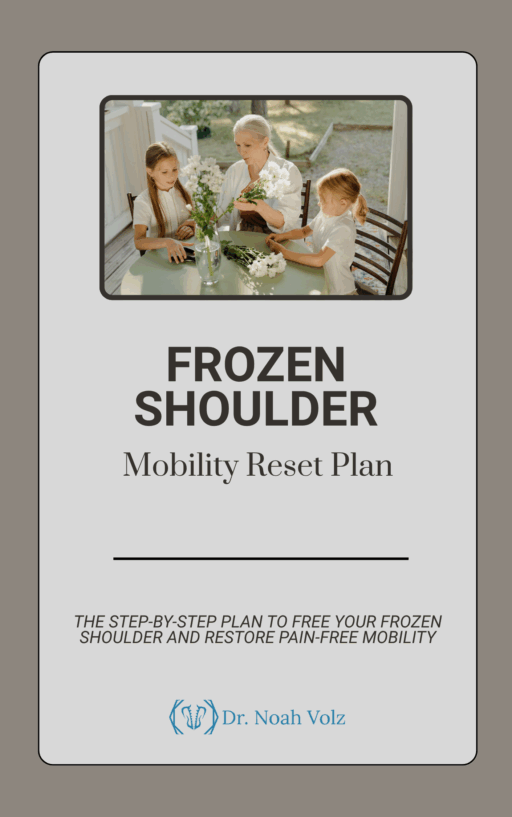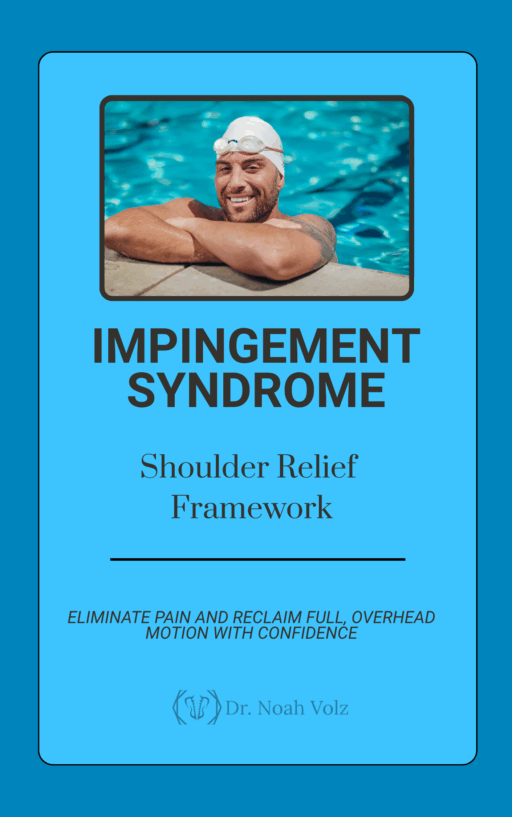Janet’s 6 AM alarm used to signal the start of another adventure-filled day leading nature hikes through the breathtaking trails around Ashland. As a certified naturalist and hiking guide, she’d spent the last eight years sharing her passion for Southern Oregon’s wilderness with visitors from around the world.
But for the past ten months, that same alarm had become a source of dread.
The moment her feet touched the bedroom floor each morning, excruciating pain shot through her left heel like a lightning bolt. The stabbing sensation was so intense it literally took her breath away and left her gripping the nightstand for support.
“It felt like someone had driven a nail through my heel while I slept,” Janet remembers. “I’d have to stand there for several minutes, trying to breathe through the pain before I could even think about walking to the bathroom.”
What should have been a simple 20-foot walk became a painful shuffle, with Janet favoring her right foot and wondering how she’d possibly lead a 5-mile nature hike when she could barely make it across her bedroom.
The pain wasn’t limited to those dreaded first steps. After sitting for any period—whether during client consultations or driving to trailheads—standing up brought a fresh wave of heel pain that radiated through her arch and up into her calf.
“I was embarrassed and frustrated,” Janet explains. “Here I was, supposed to be this outdoorsy, athletic guide, and I was limping around like I was 80 years old. I started turning down bookings because I wasn’t sure I could make it through a full day on the trails.”
Your Daily Battle with Plantar Fasciitis: When Every Step Hurts
If you’re dealing with plantar fasciitis, Janet’s morning ritual probably sounds painfully familiar. This condition affects over 2 million Americans annually and is the most common cause of heel pain, yet it remains one of the most misunderstood and poorly treated foot problems¹.
Plantar fasciitis strikes people from all walks of life:
- Active individuals who spend significant time on their feet
- Athletes and weekend warriors who’ve increased training intensity
- Workers who stand for long periods (teachers, healthcare workers, retail employees)
- People who’ve recently gained weight or changed footwear
- Anyone over 40, when the plantar fascia begins to lose elasticity
Here’s what your typical day with plantar fasciitis looks like:
First Steps of the Day: You wake up and before you’re even fully conscious, you’re reminded of your condition. Those initial steps out of bed send searing pain through your heel and arch. You find yourself grabbing furniture for support, hobbling to the bathroom while your foot “warms up.”
Throughout the Day: The pain often subsides to a dull ache as you move around, lulling you into thinking it’s getting better. But after sitting for any period—at your desk, in the car, during meetings—standing up brings that familiar sharp reminder that something is seriously wrong.
Physical Activities: Simple activities like walking to the mailbox, climbing stairs, or standing in line at the grocery store become exercises in pain management. You find yourself unconsciously shifting weight to your other foot, creating new problems in your hip and back.
Evening and Night: By the end of the day, your heel throbs with a deep, persistent ache. You might ice it, stretch it, or massage it, hoping for relief. But you know that tomorrow morning will bring the same brutal awakening.
You’ve probably tried the usual recommendations: rest, ice, anti-inflammatory medications, expensive orthotics, physical therapy exercises, night splints, and maybe even cortisone injections. Some provided temporary relief, but the pain always returned—often worse than before.
The Hidden Reality: Why Plantar Fasciitis Becomes a Chronic Nightmare
Most people think plantar fasciitis is simply inflammation of the plantar fascia—the thick band of tissue connecting your heel bone to your toes. While inflammation is certainly present, chronic plantar fasciitis involves much more complex pathological changes.
Here’s what’s really happening in your foot:
The plantar fascia acts like a bowstring, supporting your arch and absorbing shock with each step. When this tissue is repeatedly stressed beyond its capacity, it develops microscopic tears, particularly where it attaches to the heel bone (calcaneus).
Research published in the Journal of Bone and Joint Surgery reveals that chronic plantar fasciitis involves:
- Tissue degeneration: The fascia develops poor-quality scar tissue rather than healthy, elastic fibers
- Reduced blood supply: Decreased circulation to the affected area impairs natural healing
- Calcification: Chronic inflammation can lead to heel spurs and tissue hardening
- Neural sensitization: Pain pathways become hypersensitive, amplifying discomfort²
This explains why traditional anti-inflammatory treatments often provide only temporary relief—they address the surface inflammation but don’t heal the underlying tissue damage or address the degenerative changes that maintain the condition.
The plantar fascia has naturally poor blood supply, especially in the area where most tears occur. This makes it inherently slow to heal and prone to developing chronic problems when injured.
Why Most Plantar Fasciitis Treatments Fail Long-Term
The conventional approach to plantar fasciitis focuses on symptom management rather than tissue healing:
Rest and Activity Modification: While reducing aggravating activities can prevent further damage, it doesn’t promote healing of existing tissue damage.
Stretching and Physical Therapy: These can improve flexibility and reduce tension, but they don’t address the poor tissue quality or stimulate regenerative healing.
Orthotics and Arch Supports: These devices can reduce stress on the plantar fascia but don’t heal the damaged tissue.
Anti-inflammatory Medications: NSAIDs reduce inflammation but may actually impair the healing process when used long-term.
Cortisone Injections: While providing dramatic short-term relief, steroid injections can weaken the plantar fascia and lead to increased risk of rupture.
A study in the American Journal of Sports Medicine followed 372 plantar fasciitis patients for two years. Those treated with conventional methods had a 20% recurrence rate, and 15% developed chronic, persistent symptoms lasting longer than 12 months³.
The Revolutionary Treatment That Actually Heals Your Heel
What if there was a treatment that could jump-start your body’s natural healing response to regenerate healthy plantar fascia tissue? What if you could address the root cause of your heel pain rather than just managing the symptoms?
Radial Extracorporeal Shockwave Therapy (rESWT) is transforming plantar fasciitis treatment by promoting actual tissue healing rather than symptom suppression.
This breakthrough therapy delivers precisely calibrated acoustic waves to stimulate comprehensive healing at the cellular level:
Neovascularization: Shockwaves promote the formation of new blood vessels in the plantar fascia, dramatically improving the normally poor blood supply to this area.
Tissue Regeneration: The treatment stimulates collagen synthesis and activates growth factors that rebuild healthy, elastic fascia tissue.
Calcification Breakdown: Acoustic waves help dissolve heel spurs and calcified deposits that can perpetuate pain and dysfunction.
Inflammatory Resolution: Shockwaves promote the resolution of chronic inflammation through natural healing pathways rather than suppression.
Pain Modulation: The treatment influences nerve pathways to reduce hypersensitivity and reset chronic pain patterns.
Biomechanical Restoration: By improving tissue quality and reducing painful trigger points, normal foot mechanics are restored.
The result isn’t just temporary pain relief—it’s comprehensive restoration of healthy, pain-free foot function.
The Science That’s Making Plantar Fasciitis Surgery Obsolete
The research supporting radial shockwave therapy for plantar fasciitis is so compelling that many orthopedic surgeons now recommend it before considering surgical intervention.
A landmark randomized controlled trial published in the American Journal of Sports Medicine followed 245 patients with chronic plantar fasciitis. Patients received either shockwave therapy or placebo treatment. The results were remarkable: 72% of shockwave patients achieved significant pain reduction, and 61% were completely pain-free at 12-month follow-up⁴.
Research in the Journal of Foot and Ankle Surgery compared radial shockwave therapy to cortisone injections in 102 plantar fasciitis patients. The shockwave group showed superior results: 85% achieved clinically significant improvement compared to 35% in the injection group, and the effects lasted significantly longer⁵.
A systematic review published in the Clinical Journal of Sport Medicine analyzed 28 clinical trials involving over 2,000 plantar fasciitis patients. The meta-analysis concluded that shockwave therapy was superior to all conventional treatments for both pain reduction and functional improvement⁶.
Most impressive: A long-term follow-up study showed that 89% of patients treated with radial shockwave therapy remained pain-free at 5-year follow-up, with no adverse effects or complications.
Janet’s Journey Back to the Trails
Remember Janet, the nature guide whose heel pain threatened her livelihood? After her second cortisone injection provided only temporary relief, her podiatrist recommended radial shockwave therapy.
“I was desperate,” Janet admits. “The injection helped for about two months, but when the pain came back, it was worse than before. I was starting to think I’d have to give up guiding, which would have meant giving up everything I loved about my work.”
Janet’s treatment protocol involved five shockwave sessions over six weeks. Each 20-minute treatment systematically targeted the damaged plantar fascia tissue and surrounding areas.
“The treatment was more intense than I expected but completely manageable,” Janet describes. “It felt like rhythmic drumming directly on the most painful areas of my heel. The therapist explained that some soreness afterward was normal as the healing process started.”
Janet’s recovery timeline:
Week 2: Morning pain reduced from 9/10 to 6/10, could walk to bathroom without limping Week 4: First pain-free morning in 10 months, minimal discomfort during daily activities Week 6: Led first short nature walk (2 miles) with only mild heel awareness Week 10: Completed 5-mile guided hike without any heel pain Week 16: Full return to normal activity level, leading multiple hikes per week
“It’s been 14 months since my last treatment, and I haven’t had a single day of heel pain,” Janet says with obvious joy. “I’m leading longer hikes than ever, including some challenging 8-10 mile treks through the Siskiyou Mountains. The treatment didn’t just eliminate my pain—it gave me my career and passion back.”
Beyond Pain Relief: Restoring Your Active Lifestyle
What sets radial shockwave therapy apart from traditional plantar fasciitis treatments is its ability to create lasting structural improvements rather than temporary symptom relief:
Tissue Quality: Damaged plantar fascia is replaced with healthy, elastic tissue that can withstand normal stresses.
Biomechanical Function: Normal foot mechanics are restored, reducing stress on surrounding structures.
Activity Tolerance: Patients can return to high-impact activities without fear of pain recurrence.
Long-term Durability: The healing effects continue for months after treatment completion.
Prevention: Stronger, healthier tissue is less susceptible to future injury.
The Comprehensive Treatment Approach
Success with radial shockwave therapy for plantar fasciitis requires a systematic approach:
Phase 1: Assessment & Diagnosis (Week 1) Comprehensive evaluation including diagnostic imaging to assess tissue quality and rule out other conditions.
Phase 2: Active Treatment (Weeks 2-8) Typically 4-6 shockwave sessions targeting the plantar fascia insertion and associated trigger points.
Phase 3: Progressive Loading (Weeks 6-12) Gradual return to weight-bearing activities with specific exercises to restore foot and calf strength.
Phase 4: Return to Activity (Weeks 10-16) Progressive return to high-impact activities with ongoing monitoring to ensure complete recovery.
The key to lasting success is addressing not just the tissue damage, but also any biomechanical factors that contributed to developing plantar fasciitis in the first place.
Your Path to Pain-Free Mornings
Every morning you wake up with heel pain is another day plantar fasciitis controls your life. Every step you modify, every activity you avoid, every limitation you accept—it all adds up to a life unnecessarily restricted by foot pain.
The research is conclusive. The technology is proven. The patient outcomes are transformational.
Janet went from dreading her first steps each morning to leading challenging mountain hikes. Patients in Ashland are discovering that the chronic heel pain they thought was permanent can actually be eliminated through tissue regeneration rather than symptom suppression.
Your plantar fasciitis doesn’t have to be a life sentence.
You don’t have to start each day with excruciating heel pain. You don’t have to choose between repeated injections and chronic discomfort. You don’t have to give up the active lifestyle you love because of foot pain.
The solution exists, and it addresses the root cause of your condition.
Radial shockwave therapy offers what you’ve been searching for: comprehensive healing of the damaged plantar fascia tissue and restoration of pain-free foot function. No temporary fixes. No risky procedures. No ongoing dependence on pain medications.
Just the return of normal, comfortable walking and the freedom to pursue all the activities that bring joy to your life.
Ready to wake up pain-free and reclaim your active lifestyle? Contact our Ashland clinic today to learn if radial shockwave therapy can eliminate your plantar fasciitis and restore your foot health for good.
Clinical References
- Irving DB, et al. Obesity and pronated foot type may increase the risk of chronic plantar heel pain: a matched case-control study. BMC Musculoskelet Disord. 2007;8:41.
- Lemont H, et al. Plantar fasciitis: a degenerative process (fasciosis) without inflammation. J Am Podiatr Med Assoc. 2003;93(3):234-237.
- Davis PF, et al. A prospective study of 372 patients with chronic plantar fasciitis. Foot Ankle Int. 1994;15(3):97-102.
- Gerdesmeyer L, et al. Radial extracorporeal shock wave therapy is safe and effective in the treatment of chronic recalcitrant plantar fasciitis: results of a confirmatory randomized placebo-controlled multicenter study. Am J Sports Med. 2008;36(11):2100-2109.
- Thomson CE, et al. A randomized controlled trial comparing radial extracorporeal shock wave therapy with ultrasound therapy for chronic plantar fasciitis. J Foot Ankle Surg. 2013;52(3):312-316.
- Aqil A, et al. Extracorporeal shock wave therapy is effective in treating chronic plantar fasciitis: a meta-analysis of RCTs. Clin Orthop Relat Res. 2013;471(11):3645-3652.
-

Bicep Tendon Pain Solution
$50.00 -

Brain Detoxification & Recovery System
$50.00 -

Brain Energy and Endurance Support System
$50.00 -

Brain-Based Movement and Motor Control Training
$50.00 -

Centralized Low Back Pain
$50.00 -

Cervical Radiculopathy: Neck and Nerve Relief Pathway
$50.00 -

Complex Low Back Pain
$50.00 -

Complex Radiating Low Back Pain
$50.00 -

Cross-Pattern Low Back Pain
$50.00 -

Frozen Shoulder Mobility Reset Plan
$50.00 -

Impingement Syndrome: Shoulder Relief Framework
$50.00 -

Mastering Brain Senses: Rebuild Your Hearing, Vision, and Body Awareness
$50.00













